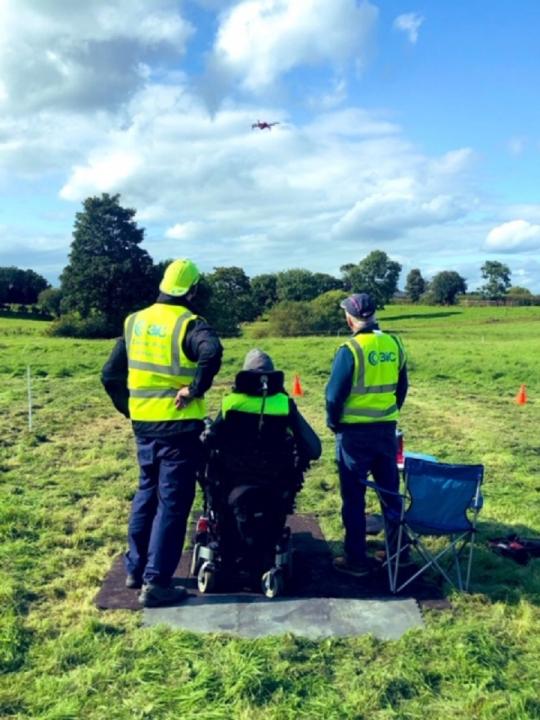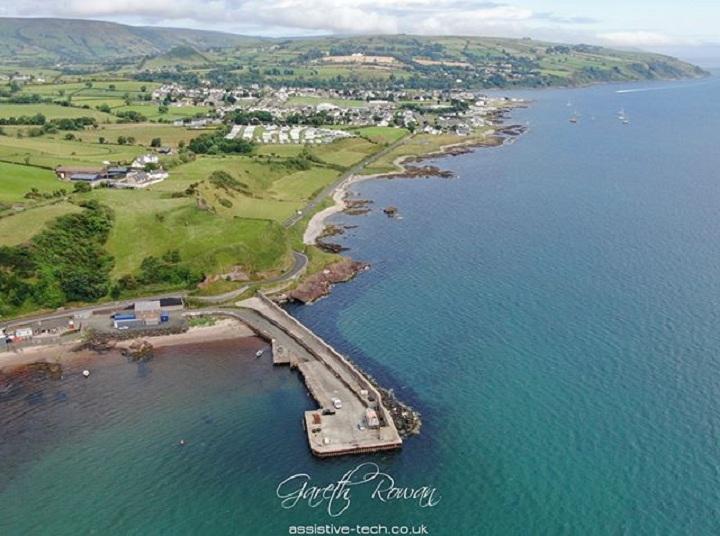
Sync NI's Niamh Campbell has been chatting to Gareth Rowan about becoming an accomplished drone pilot against adversity, assistive tech, and how he has inspired others through his own experiences.
In 2014, Gareth Rowan had a job sailing superyachts round the world. He was passionate about travelling and photography, but tragedy struck in April that year, which changed his life forever.
“I was at a beach in Antigua (an island in the West Indies) and just before we left I dove into the water to get sand off me, as I had done so many other times that day. But this time when I dove into the waves I hit my head on a sandbank, which left me with a C4 level burst fracture. It means I don’t really have any movement from my shoulders down. After emergency surgery to stabilise my neck I was medevaced to Jackson Memorial hospital in Miami. I spent six weeks in ICU then rehab there for about 12 weeks before being transferred back to Belfast for ten more weeks."
“Once in hospital after my accident, I tried to research how I could use a mobile phone or computer with assistive technology, but there wasn’t anywhere to get all information in one place. I thought, if I’m trying to figure out how to use these things other people must be too.”

Gareth already had an interest in drones before the accident, and needed little motivation in discovering how he would be able to fly one himself.
“Whenever I was figuring out how to use different technologies, I found out that the Parrot Bebop 2 drone can be flown from a phone using virtual joysticks that appear on a phone or tablet screen. Then I got an Android tablet that I could use with an assistive mouse called GlassOuse. That helped me as with my limited hand movements I was still able to use the functions on the Android tablet a lot easier. Then I realised that if I had the Dji Mavic Pro (drone) I would be able to use all of the intelligent flight modes. I knew if I was able to use tablets with the assistive mouse, I would be able to get a drone that I could gain more control of with my hand. Then I was able to move onto more advanced drones.”
Gareth recently passed his permission for commercial operations. This is needed for selling any photographs or videos he takes with his drones, which he hopes to do via his website.
“There were eight online modules and a quiz at the end of each module I had to complete. Then I had to write an operations manual. I had one hour to do the theory test then once I passed that I was able to do the practical exam. I started the course before Christmas, but you can study online at your own pace.”

Gareth recently passed his permission for commercial operations
He has also been using his website to showcase his knowledge of assistive technology, in order to help others in similar situations. He has even been surprising professionals in the medical field with his extensive expertise.
“One day an occupational therapist (OT) came to visit the house and I was showing them how I can use the Amazon Alexa to turn on the TV and change the channel and things. They were amazed at the ways I could do things easily and with little expense, so then I was able to give talks to different OTs on how to do this.”
“Different people from all over the world have contacted me. Someone in the U.S. got in touch to ask how I set up my drone and how I could fly it. It’s mostly family members and OTs asking for direction on how to help their family, friends and patients. I try to help people increase their independence. When I first came out of hospital I had to get someone to change the TV channel for me, turn lights on and off and other things. Now using the Amazon Alexa I can do all these and more with just voice control.”
"A hospice manager came to one of my public talks and thought the Amazon Echo would be helpful for a patient she had who suffers from motor neurone disease. She was able to set it up to so that he could control his TV, lights and even ring people. It was the first time in years he was able to call his wife on his own."
Not only has Gareth helped people gain autonomy and self-determination, but he has also been requested to speak at a number of public appearances.
“I’ve recently been asked to speak at a European-wide Symposium in Dublin next summer, which is all to do with seating and postural care in wheelchairs and this year they are now including assistive technology. I also spoke at the Guttmann conference for spinal cord injury and showed the assistive technologies I use.”

"One hospital got in touch with me to say they have been looking into the area of commercially available smart home devices - so I’m going to go and help them set up a room so that if people have similar accidents they can show them how to cope. That’s the first time a hospital setting has reached out to me; usually its families and individuals, but this will now help people on wider basis as being in the hospital they’ll be exposed to his help first-hand.”
"A big problem people come to me with is cost and time. To get something arranged, and then go through all the cost avenues, health trusts etc. can take a few months, whereas people don’t realise you can just go online and order some of these assistive techs through the likes of Amazon for the next day, to have set up in a couple of hours.”
"People think it is all very complicated technology but it can all be done through apps. I always say if you can use a mobile online banking app you’ll be able to use these things.”
To find out more about Gareth’s story, including his appearance on the BBC’s One Show and a full gallery of his drone work, visit his website here or follow him on Twitter.

Photos (c) Gareth Rowan & Michael McBride